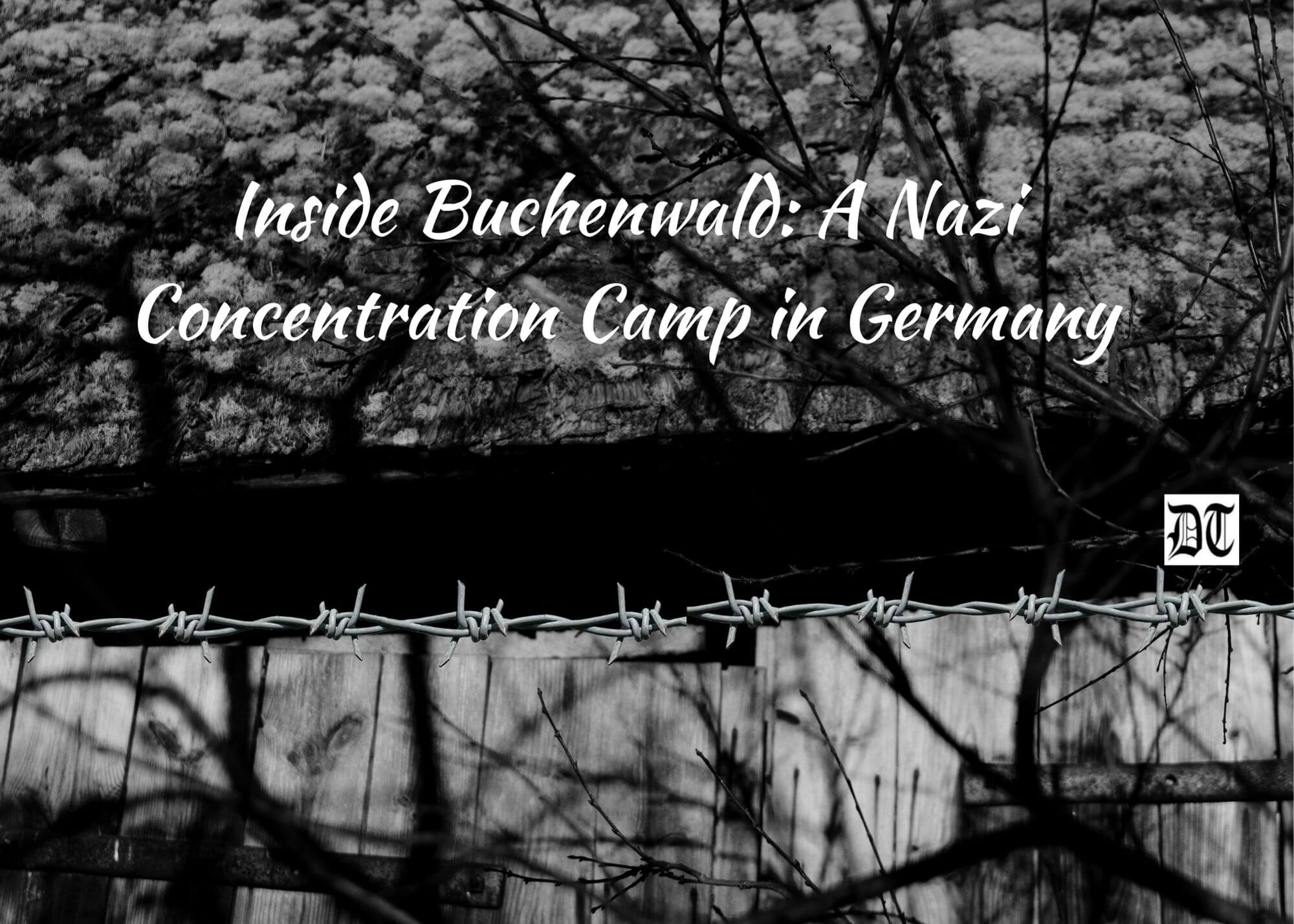Dr. Roopali reminisces about her journey to Buchenwald. She recalls the excesses of the Nazis in the concentration camps at this place, revisiting history of war and cruelty. An exclusive for Different Truths.

Mr. Taraporewala ran a popular circulating library on Brigade Road, in Bangalore. He had dozens of used books on World War II. He charged very little, and we could borrow books for a week at a time.
Films with titles like Stalag 17, To Hell and Back, The Great Escape, The Nuremberg Trials, The Longest Day, The Eagle is Landing were showing in movie halls around Bangalore. Father would take us to see them. Now I was curious to know more. Mr. Taraporewala’s books on Hitler, Himmler, and Anne Frank caught my attention.
Romanian-born American writer, professor, political activist, Nobel laureate, and Holocaust survivor Elie Wiesel has written in Night, of his experiences as a Jewish prisoner in concentration camps.
War on the silver screen is almost always exciting, daring and heroic.
War on the silver screen is almost always exciting, daring and heroic. Although scenes of stuffed cattle trains full of frightened people and of people digging tunnels to escape terrified us. As did visuals of women, children, and men, pulled out of their homes by the Gestapo and taken to concentration camps to be starved and killed.
It happened in the lifetime of our parents. It could happen again. The stories in the books did not spare any horrific details. There were photographs too.
As a 13-year-old, all this gave me the creeps. But it also let my mind look keenly at war and its evil ramifications.
As a 13-year-old, all this gave me the creeps. But it also let my mind look keenly at war and its evil ramifications. Pictures of walking human skeletons were real. The Nazi’s used them for propaganda. Later the pictures stood as silent witness to the crimes against humanity.
At the Nuremberg trials all that they could say was, “Der Führertold me.” That was all that was needed to perpetrate the most horrifying atrocities. They called it “ethnic cleansing.”
The power of one man and his evil thoughts could influence millions and exterminate millions. I had read about it and now I was to see it all. A chance visit to Germany for a literature conference brought me face to face with reality. Lest we forget.
That summer, my German friend, Anna and I, walked 10 kilometers from the famed city of Weimar to Buchenwald.
One of the biggest and oldest Nazi-run concentration camps, the Buchenwald camp held a total of 20,000 slave labourers during World War-II.
One of the biggest and oldest Nazi-run concentration camps, the Buchenwald camp held a total of 20,000 slave labourers during World War-II. Buchenwald was set up amidst cherry trees. A forest of cherry trees. My heard began to race, and my mind pulled out photographs.
I had read of a Nazi woman who had run amok at a concentration camp. She was an “extraordinary sadist” who collected table lamps and purses and wallets out of human skin and drew fine artwork on them! Known as the Witch of Buchenwald, Ilse Koch, I learned, had been the wife of the commandant of the Buchenwald concentration camp.
And then there was this cruel man called Doctor Josef Mengele who conducted inhumane medical experiments on prisoners at Auschwitz.
And then there was this cruel man called Doctor Josef Mengele who conducted inhumane medical experiments on prisoners at Auschwitz. He also experimented on twin children. And there were others who experimented vaccinations for Typhus on prisoners. Turning human beings into guinea pigs.
We stopped at the massive black iron gate with its watchtower displaying a clock. It’s time permanently fixed at 3.15 PM
At 3:15 PM on April 11, 1945, Captain Frederic Keffer commanded the first unit of American soldiers to enter the gates of Buchenwald. It was an unbearable unimaginable inhuman sight Captain Keffer and his team confronted.
Approximately 250,000 prisoners had withstood the incarceration and death marches at Buchenwald.
Approximately 250,000 prisoners had withstood the incarceration and death marches at Buchenwald. Tens of thousands of these survivors were too weak or sick to live more than a few days, weeks, or months, notwithstanding the care that they received after being rescued.
As we entered the gate a vast area with large stark factory-looking buildings stared back at us. One of them had a row of incinerators and iron ovens. Everyday more than a thousand people were thrown into the fire. Some dead. Some barely alive. The fire burnt night and day.
We kept silent in reverence to those who were starved, tortured, and roasted alive.
Now flowers lie in bunches in memory. We kept silent in reverence to those who were starved, tortured, and roasted alive. Yet we can’t remain mute. We must break the silence and speak up.
A few paces ahead, we were shown a booth with a slit at the back. One at a time the Nazi soldiers would shoot their helpless, innocent victims. I couldn’t stop the tears from falling.
My friend Anna spoke out with bitter sarcasm, “We Germans are very thorough,” she spat.
I didn’t wish to visit the museum. I didn’t think I could stomach so much cruelty.
I didn’t wish to visit the museum. I didn’t think I could stomach so much cruelty. The stench and ashes from the incinerator seemed to still hang solid among the cherry trees. At the Holocaust Museum in Washington DC, at the Museum in Leningrad, at the Memorial Museum in Lidice, and in Moscow I had seen and felt a great deal already.

Strangely the stench of burning human flesh never reached those living in Weimar just 10 kilometers away. When the allied forces asked them, they denied knowledge of any such activity. They were surprised, they said.
And yet ashes from the incinerators blew across and covered the green leaves.
And yet ashes from the incinerators blew across and covered the green leaves. Fear or indifference kept the residents of Weimar from opening their mouths. They had gone into collective denial. Bob Dylan sings “How many times must a man turn around and pretend he just doesn’t see? The answer my friend is blowing in the wind….”
Later, the Allied Forces had insisted the residents of Weimar tour Buchenwald.
Ironically, once upon a time such great figures as Martin Luther, Cranach and Bach had lived and worked in Weimar. It was home to the likes of Goethe, Schiller, and Nietzsche. Adolf Hitler frequented his favourite Elephant Hotel and restaurant here. I felt nauseated.
I dragged my heart and feet and soul away from Buchenwald.
I dragged my heart and feet and soul away from Buchenwald. William Wordsworth’s words “… and much it grieved my heart to think, what man has made of man,” came stumbling into my mind.
Travelling for pleasure is indeed lovely, but travel could also come with an opportunity to retrace one’s steps. To learn from history.
I have not forgotten the big black iron gate and its clock stopped at 3.15.
Picture design by Anumita Roy and image from History.com, Different Truths






 By
By

